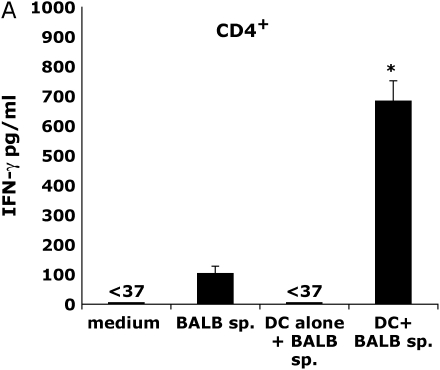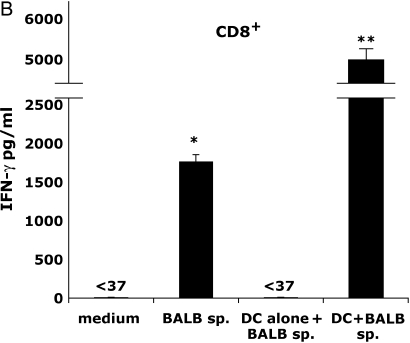Figure 4.
CD4+ T cells produce alloantigen-specific IFN-γ, predominantly through indirect allorecognition, whereas CD8+ T cells are capable of IFN-γ production via direct allorecognition. CD4+ (A) and CD8+ (B) T cells (> 97% pure) were isolated from allograft (BALB/c into B6) spleen (Day 14) and cultured (2 × 105 cells/200 μl) in the presence or absence of irradiated BALB/c splenocytes (7 × 104) with/without syngenic dendritic cells (DC) (7 × 104) isolated from naive B6 mice. DC alone without T cells were also tested with alloantigen. At 72 h, culture supernatants were assessed for IFN-γ using ELISA. Statistically significant differences between alloantigen-induced IFN-γ responses compared with medium responses are indicated by (*P ⩽ 0.02 in [A] and P ⩽ 0.005 in [B]). The enhancement of IFN-γ production in cultures of alloantigen-stimulated CD8+ T cells in the presence of syngeneic DC is indicated by (**P ⩽ 0.005 in [B]) compared with alloantigen stimulation without syngeneic DC. Results are representative of three independent experiments (n = 3–5 mice per group).


